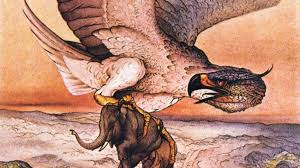Mythical Monsters: The Asuwang
In the folklore of the Philippines, a monster stirs in the inky dusk. Shedding its human guise, it unfurls its warped, leathery wings. The long, scythe-like claws of its lanky forearms rasp softly against the floor, twitching in anticipation of the hunt. They are perfect for puncturing soft human flesh: on good nights, the beast pins its squirming victims to the ground while its thick tongue slithers down their throats, slurping out their organs. When the hunting is bad, it must content itself with the decaying flesh of freshly-buried corpses, hastily gobbling the scavenged meal before fleeing with the first rays of dawn.
It has many names, all whispered with the same edge of rank fear: Tik-Tik for the tapping of its claws on the roof, Bayot for the noise it makes when it swallows. But most commonly it is called Asuwang, derived from the Sanskrit word for demon. At night, it gorges itself on the human race; by day, it walks among them, often preferring the form of its last living victim. An Asuwang imitates its prey flawlessly; many wives have returned to bed with their supposed husbands only to be devoured by the fell beast wearing their beloved’s face. The only reliable way to identify an Asuwang in its human disguise is to look into its eyes: if your reflection is upside-down, you are not conversing with a fellow mortal. Bending over to view the creature from between your legs is yet another method, as the human appearance of the Asuwang will be distorted. Other stories assert than an Asuwang in human form lacks a philtrum, the crease above your upper lip, or that their presence causes sanctified oil to bubble and hiss.
If you find yourself face-to-face with a disguised Asuwang, you may not be in immediate danger: from time to time, they have been known to befriend humans, and will not attack friends or neighbors. Their loyalty is unwavering, prompting the Filipino saying “an Asuwang is better than a thief.” If you ever meet a hostile Asuwang, however, it is unlikely that you will notice before you are attacked; when stalking their prey, they are deadly silent and swift as the wind. They corral their victims with bone-chilling shrieks that get louder the farther away the creature is, startling potential meals straight into their grasp. Making a heroic last stand is ill-advised: only a buntot pagi, a whip fashioned entirely from a stingray’s tail, can so much as wound one. You would be far better served to try to flee to a church or other holy ground, where the Asuwang cannot venture.
Of course, the best strategy of all is to dissuade an Asuwang from claiming your area as his territory in the first place. To this end, an agimat, or charm, can be purchased from an albularyo, Filipino witch-doctors who practice traditional anting-anting. It is also said that the Asuwang, like most demons and sanguiphages, fear religious artifacts, garlic, and salt. If you’re planning on visiting the Philippines and wish to keep all your organs intact, you would be wise to keep a healthy supply of all of the above– particularly if you’re going out after dusk.








